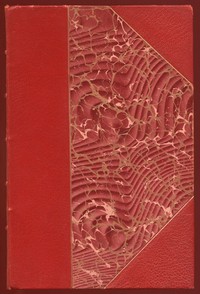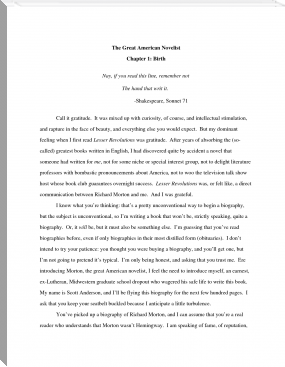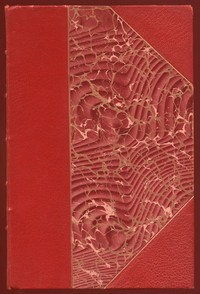The Heart of Mid-Lothian, Volume 2, Walter Scott [dark books to read .TXT] 📗

- Author: Walter Scott
Book online «The Heart of Mid-Lothian, Volume 2, Walter Scott [dark books to read .TXT] 📗». Author Walter Scott
[A copy of this rare little volume is in the library at Abbotsford.]
NOTE J.—INTERCOURSE OF THE COVENANTERS WITH THE INVISIBLE WORLD.
The gloomy, dangerous, and constant wanderings of the persecuted sect of Cameronians, naturally led to their entertaining with peculiar credulity the belief that they were sometimes persecuted, not only by the wrath of men, but by the secret wiles and open terrors of Satan. In fact, a flood could not happen, a horse cast a shoe, or any other the most ordinary interruption thwart a minister's wish to perform service at a particular spot, than the accident was imputed to the immediate agency of fiends. The encounter of Alexander Peden with the Devil in the cave, and that of John Sample with the demon in the ford, are given by Peter Walker almost in the language of the text.
NOTE K.—CHILD-MURDER.
The Scottish Statute Book, anno 1690, CHAPTER 21, in consequence of the great increase of the crime of child-murder, both from the temptations to commit the offence and the difficulty of discovery enacted a certain set of presumptions, which, in the absence of direct proof, the jury were directed to receive as evidence of the crime having actually been committed. The circumstances selected for this purpose were, that the woman should have concealed her situation during the whole period of pregnancy; that she should not have called for help at her delivery; and that, combined with these grounds of suspicion, the child should be either found dead or be altogether missing. Many persons suffered death during the last century under this severe act. But during the author's memory a more lenient course was followed, and the female accused under the act, and conscious of no competent defence, usually lodged a petition to the Court of Justiciary, denying, for form's sake, the tenor of the indictment, but stating, that as her good name had been destroyed by the charge, she was willing to submit to sentence of banishment, to which the crown counsel usually consented. This lenity in practice, and the comparative infrequency of the crime since the doom of public ecclesiastical penance has been generally dispensed with, have led to the abolition of the Statute of William, and Mary, which is now replaced by another, imposing banishment in those circumstances in which the crime was formerly capital. This alteration took place in 1803.
NOTE L.—CALUMNIATOR OF THE FAIR SEX.
The journal of Graves, a Bow Street officer, despatched to Holland to obtain the surrender of the unfortunate William Brodie, bears a reflection on the ladies somewhat like that put in the mouth of the police-officer Sharpitlaw. It had been found difficult to identify the unhappy criminal; and when a Scotch gentleman of respectability had seemed disposed to give evidence on the point required, his son-in-law, a clergyman in Amsterdam, and his daughter, were suspected by Graves to have used arguments with the witness to dissuade him from giving his testimony. On which subject the journal of the Bow Street officer proceeds thus:—
"Saw then a manifest reluctance in Mr. ———-, and had no doubt the daughter and parson would endeavour to persuade him to decline troubling himself in the matter, but judged he could not go back from what he had said to Mr. Rich.—Nota Bene. No mischief but a woman or a priest in it—here both."
NOTE M.—Sir William Dick of Braid.
This gentleman formed a striking example of the instability of human prosperity. He was once the wealthiest man of his time in Scotland, a merchant in an extensive line of commerce, and a farmer of the public revenue; insomuch that, about 1640, he estimated his fortune at two hundred thousand pounds sterling. Sir William Dick was a zealous Covenanter; and in the memorable year 1641, he lent the Scottish Convention of Estates one hundred thousand merks at once, and thereby enabled them to support and pay their army, which must otherwise have broken to pieces. He afterwards advanced L20,000 for the service of King Charles, during the usurpation; and having, by owning the royal cause, provoked the displeasure of the ruling party, he was fleeced of more money, amounting in all to L65,000 sterling.
Being in this manner reduced to indigence, he went to London to try to recover some part of the sums which had been lent on Government security. Instead of receiving any satisfaction, the Scottish Croesus was thrown into prison, in which he died, 19th December 1655. It is said his death was hastened by the want of common necessaries. But this statement is somewhat exaggerated, if it be true, as is commonly said, that though he was not supplied with bread, he had plenty of pie-crust, thence called "Sir William Dick's Necessity."
The changes of fortune are commemorated in a folio pamphlet, entitled, "The Lamentable Estate and distressed Case of Sir William Dick" [Lond. 1656]. It contains three copper-plates, one representing Sir William on horseback, and attended with guards as Lord Provost of Edinburgh, superintending the unloading of one of his rich argosies. A second exhibiting him as arrested, and in the hands of the bailiffs. A third presents him dead in prison. The tract is esteemed highly valuable by collectors of prints. The only copy I ever saw upon sale, was rated at L30. (In London sales, copies have varied in price from L15 to L52: 10s.)
NOTE N.—Doomster, or Dempster, of Court.
The





Comments (0)